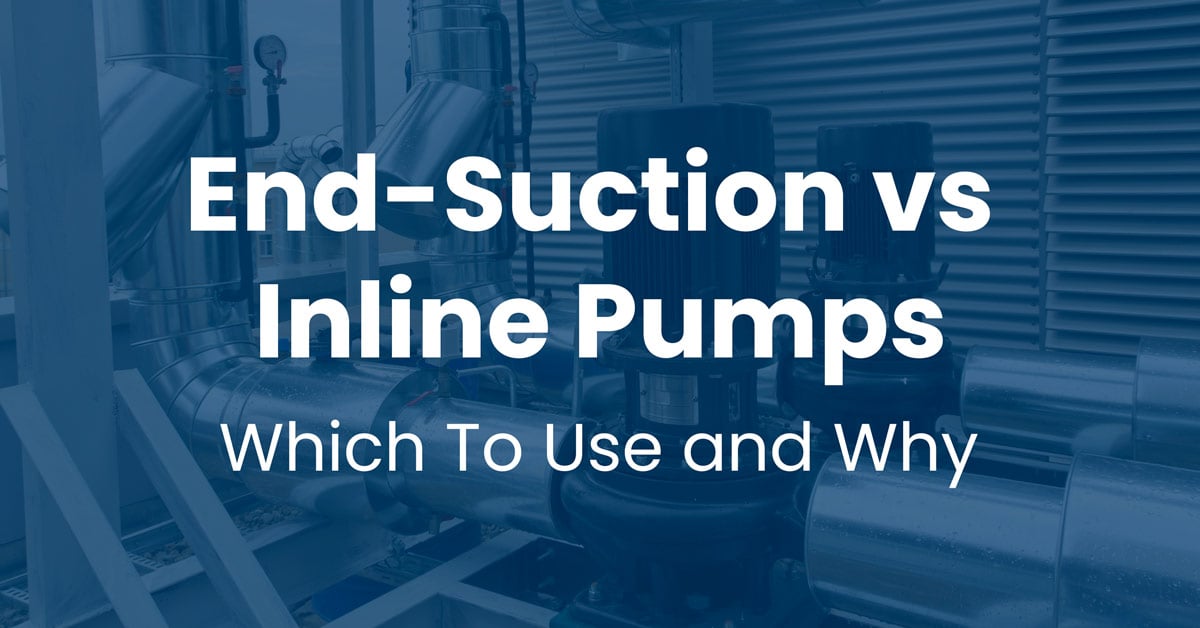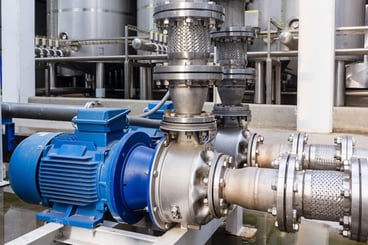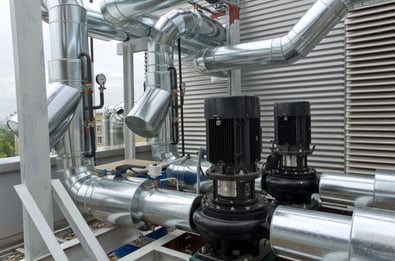End-Suction vs Inline Pumps: Which To Use?

A pump moves fluid from one location to another. However, there are several types of pumps that you can use to meet your fluid transportation requirements. How do you choose the correct one? Usually, this is where the discussion between end-suction pumps and inline pumps begins.
End Suction Pumps vs Inline Pumps – The Difference
End Suction Pumps
End suction pumps are centrifugal pumps consisting of an axial inlet for suction. The pump discharges the fluid at 90 degrees to the suction. Due to their simplicity, end-suction pumps are the most common centrifugal pumps used in most applications.
Inline Pumps
The inlet and outlet points in the inline pumps are along the same axis. This construction enables the pump to direct the flow of water in the same line as that of the inlet, hence the name ‘inline’.
End Suction Pumps vs Inline Pumps – Construction
End Suction Pumps
End suction pumps feature a traditional construction where the shaft is in a horizontal position. This shaft rotates the impeller, sucking in the water and pushing it out at 90 degrees to the inlet under pressure. End suction pumps are also called horizontal pumps as their shaft is placed horizontally to the surface.
Inline Pumps
Inline pumps have an overhang vertical shaft and radial split case design. This type of construction allows inline pumps to take up much less space than end-suction pumps. Due to the orientation of the shaft inline pumps are also known as vertical pumps.
Pros and Cons of End Suction Pumps
 Pros
Pros
- Low cost
- Easy to install
- Low maintenance and easy to repair
- Availability of multiple nozzle configurations
Cons
- Performance degradation occurs when NPSH(R) > NPSH(A)
- Performance degrades with an increase in pressure and temperature
- Bigger footprint
Pros and Cons of Inline Suction Pumps
 Pros
Pros
- Smaller footprint
- Lower vibration
- One of the best choices for areas with limited accessibility
- Works much better with higher temperature and pressure
Cons
- Repair and maintenance is comparatively difficult
- The vertical shaft design can cause balance issues if not properly installed
- To repair the mechanical seal, the motor must be separated from the volute
Applications
End Suction Pumps
End suction pumps are one of the most common pumps that you will see in commercial and residential applications.
In the residential sector, end-suction pumps are used to pump water from a water source to a tank or another artificial reservoir. These pumps are available in a variety of materials and are also cost-effective. Since these pumps can be manufactured using different materials, they are also useful in industrial applications such as pumping corrosive and non-corrosive chemicals. Moreover, the performance of end-suction pumps is not affected by the presence of small solid particles in the fluid. Hence, you will find that most sewage or wastewater pumps are end-suction pumps.
Inline Pumps
Inline pumps are smaller than end-suction pumps and they require less space. They are commonly used as booster pumps in industries. Due to their construction, inline pumps can be fitted as valves on pipes to increase the overall pressure at different points in the large processing pipes.
Unlike end-suction pumps, inline pumps are not limited by pressure and temperature. These pumps can handle high-temperature and high-pressure environments. Due to these capabilities, inline pumps are mostly employed in industries and thermal plants.
Get Assistance in Selecting the Right Pump with Hayes
Hayes is the oldest and largest pump distributor in the Northeast, offering pump products from over 20 different manufacturers. Let our expert engineers assist you in selecting the correct pump for your specific application. Get in touch with us today!




